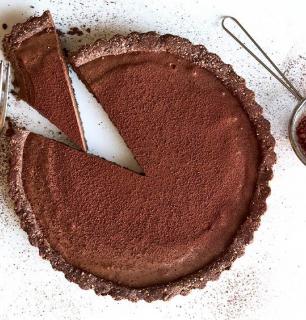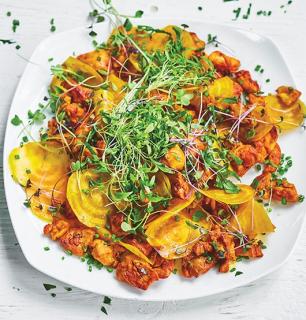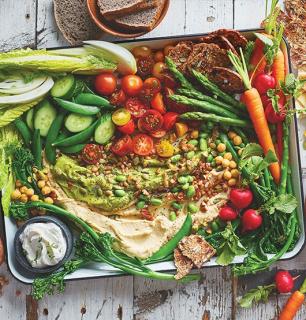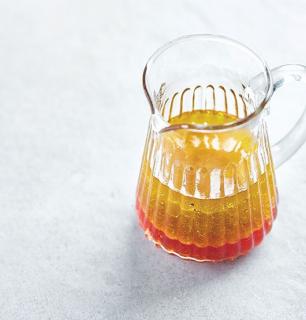“Pease Porridge Hot” OATS (flakes)
BY CÉLINE TREMBLAY
It’s almost Pavlovian: oats equals oatmeal (also called porridge or even sometimes gruel). For most people, oatmeal is a breakfast food and that’s that. But give it some thought, and muesli comes to mind, and then date squares or apple crumble (try it with a bit of cardamom), which are delicious at any time of day. Even good ol’ oatmeal cookies can be sandwiched together with a layer of peanut butter cream, and turned into a really decadent treat.
The delicate texture of oats shines wonderfully in sweets, that’s for sure. What’s less common is seeing this sturdy, nutty grain in salads, stews, breads and soups. But you can use oats to make risotto, falafels or chili, and even milk and beer. A Michigan microbrewery has even developed a breakfast stout that combines oats with a double dose of chocolate and two types of coffee. Connoisseurs describe the drink as pure pleasure, an impenetrably dark brew that’ll stare you straight in the eye early in the morning.
However, before its love affair with hops and before its reign over granola bars, oats had a long way to go – about four thousand years. The origins and history of this grain, of which there are innumerable species and subspecies, most of them with less-than-poetic names – bristle oats, black oats, short oats, naked oats – remain obscure. It is thought that oats originated in the area stretching from Turkey to the plateaus of Turkmenistan via Iran.
We do know that oats were introduced to North America by European settlers at a very fertile time. While Don Quixote was taking shape in Cervantes’ imagination and Romeo and Juliet emerged from Shakespeare’s pen, oats were taking root in this land and climate that were more than ready to welcome and nurture them.
Today, Canada is the largest exporter of oats in the world. This rediscovered plant loses virtually none of its nutrients after hulling. Of all grains, oats are the richest in fat – mainly unsaturated fatty acids. Oats are particularly rich in beta-glucans, which are believed to help regulate blood sugar and cholesterol by trapping bad cholesterol in the digestive tract and expelling it from the body, and to prevent diabetes. Oats encourage the formation of red blood cells and the production of serotonin. And oats reduce blood pressure and fight anemia.
Oats are theoretically gluten free, but almost always come into contact with products that contain gluten. As well, some people may be allergic to prolamins (oat proteins). Therefore, the Quebec celiac foundation suggests introducing oats gradually.
Stems reaching for the sky; loose, pale flower clusters; soft crops bowing in the wind; hermaphroditic flowers pollinated by the breeze. It sounds like happiness, and indeed, the Sanskrit word avana means “bliss” – one flake away from the Latin avena and the French avoine.
Quick, steel-cut or rolled?
HULL-LESS OATS Hull-less, or naked oats, are a distinct variety. At harvest, the grain loses its whole hull. The texture of hull-less oats is crunchy, and the flavour is buttery with hazelnut accents. It can be cooked as a risotto or like wild rice, earning it its nickname of “Gaspé rice.”
STEEL-CUT OATS Also called Irish oats, steel-cut oats have undergone very little processing, and so retain their nutritional properties. The whole kernel, or groat, is cut into two or three pieces. The texture is firm, and the flavour has a hint of hazelnut. Cooking time: up to 60 minutes.
ROLLED OATS Roasted, steamed and then rolled with giant cylinders into flakes, these “old-fashioned” oats are used to make muesli or granola. Cooking time: about 20 minutes.
QUICK-COOKING OATS To reduce cooking time, quick oats are steamed longer and flattened thinner. They are often used in baking or cooking.
INSTANT OATMEAL Cut, precooked, dried and steamed before being rolled, instant oatmeal is less nutritious. It is often flavoured, with salt and sugar added.
OAT FLOUR Oat flour gives baked foods a nutty taste and a soft, crumbly texture. You can replace up to one third of the all-purpose flour in most recipes with oat flour.
OAT BRAN Oat bran refers to the outer skin of the edible kernel. It contains the highest soluble fibre content, and can be eaten as a hot cereal or sprinkled on food. Oat bran is likely to have come in contact with chemicals, so using certified organic bran is recommended.
COLLOIDAL OATMEAL Oats are prized for their anti-inflammatory and emollient properties. Ground into an extremely fine powder and sprinkled in bath water, colloidal oatmeal can help relieve irritation and itching, and moisturize, soften and protect the skin.
The bad guy?
There’s a rumour going around about the phytic acid in oat bran (the outer skin of the grain). Some people believe that phytic acid, which is also found in nuts and legumes, can bind to calcium, magnesium, copper, iron and, especially, zinc during the digestive process, and supposedly block these nutrients’ absorption. Phytic acid has complex properties, and even scientists don’t entirely agree on what it does. We do know that soaking, fermenting or cooking (that is, softening) whole oats – emphasis on the whole – goes a long way in degrading phytic acid, preventing demineralization and allowing all the great benefits of oats to emerge. We just thought you oat to know.
Our recipes
See all recipes




